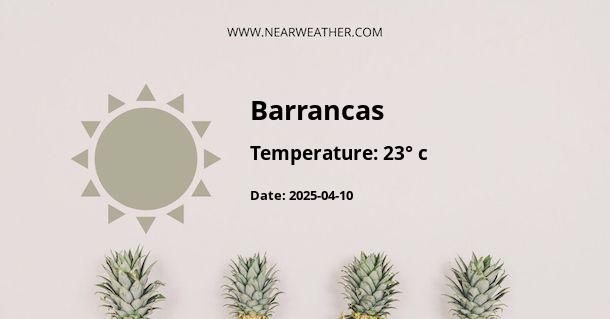Weather and Climate in Barrancas, AR
Barrancas, AR, located in the southern United States, experiences a humid subtropical climate characterized by hot, humid summers and mild winters. The climate in Barrancas is influenced by its proximity to the Gulf of Mexico, which brings moisture and warmth to the region. Understanding the year-round weather patterns in Barrancas is essential for residents, tourists, and businesses in the area.
Seasonal Weather Patterns
Let's delve into the seasonal weather patterns in Barrancas, AR to provide a comprehensive picture of what to expect throughout the year:
Spring (March-May)
During spring, Barrancas experiences a gradual increase in temperatures. The average high temperatures range from 70°F (21°C) in March to 85°F (29°C) in May. Spring also brings increased rainfall, with March typically being the driest month and May starting to see more frequent rain showers.
Summer (June-August)
Summer in Barrancas is characterized by hot and humid weather. Average high temperatures range from 88°F (31°C) in June to 92°F (33°C) in August. The region also experiences frequent thunderstorms, which are often accompanied by heavy rainfall. The humidity during the summer months can make the temperatures feel even hotter.
Fall (September-November)
As fall sets in, temperatures in Barrancas begin to cool down. Average high temperatures range from 87°F (31°C) in September to 74°F (23°C) in November. Fall also brings a decrease in humidity and is considered one of the most comfortable seasons in terms of weather in Barrancas.
Winter (December-February)
Winter in Barrancas is relatively mild compared to northern regions of the United States. Average high temperatures range from 60°F (16°C) in December to 64°F (18°C) in February. While snow is rare, Barrancas may experience occasional frost during the winter months.
Precipitation and Humidity
Precipitation and humidity play significant roles in shaping the climate of Barrancas. The region receives an average of 55 inches (140 cm) of rainfall per year, with the majority of the precipitation occurring during the summer months. The high humidity levels, particularly in the summer, can make the temperatures feel warmer than they actually are.
Weather Extremes
While Barrancas generally experiences a mild climate, it is not immune to extreme weather events. The region is vulnerable to tropical storms and hurricanes, especially during the late summer and early fall. These weather events can bring strong winds and heavy rainfall, leading to flooding and other hazards.
Climate Data for Barrancas, AR
To provide a more comprehensive understanding of the climate in Barrancas, here is a table summarizing the average monthly temperatures and precipitation levels:
| Month | Average High (°F) | Average Precipitation (inches) |
|---|---|---|
| January | 60°F | 3.5" |
| February | 64°F | 3.1" |
| March | 70°F | 4.2" |
| April | 78°F | 4.6" |
| May | 85°F | 5.8" |
| June | 88°F | 7.2" |
| July | 91°F | 7.6" |
| August | 92°F | 6.9" |
| September | 87°F | 5.4" |
| October | 80°F | 3.7" |
| November | 74°F | 3.4" |
| December | 60°F | 3.6" |
Conclusion
In conclusion, Barrancas, AR, experiences a humid subtropical climate characterized by hot, humid summers and mild winters. Understanding the year-round weather patterns, precipitation levels, and potential weather extremes is essential for individuals and businesses in the region to adequately prepare and plan for the varying climatic conditions throughout the year.
For an in-depth look at Barrancas's climate, it is recommended to consult local meteorological resources and climate data for specific and current information.
A - Barrancas's Latitude is -36.816669 & Longitude is -69.916672.
A - Weather in Barrancas is 23° today.
A - Climate Conditions in Barrancas shows overcast clouds today.
A - Humidity in Barrancas is 21% today.
A - Wind speed in Barrancas is 8.86 km/h, flowing at 117° wind direction. today.
